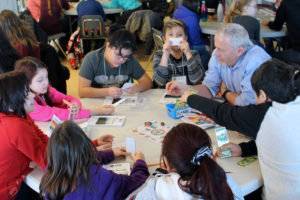Teaching the Sustainable Development Goals

To view the photo-rich magazine version, click here.
Originally appears in the Winter 2019 issue.
To print full activity including vocabulary sheet and activity cards, click here.
“The Sustainable Development Goals are the blueprint to achieve a better and more sustainable future for all. They address the global challenges we face, including those related to poverty, inequality, climate, environmental degradation, prosperity, and peace and justice.”[1]
With stories every day from around the world about the effects of climate change, inequality and our unsustainable lifestyles, it has become increasingly clear that urgent action is required by all. We are at a turning point in history and the widespread effects of these issues on our planet are being met by increasing global efforts in education, policy, and international agreements to address them.
Seventeen Sustainable Development Goals — also known as the SDGs or the Global Goals — came into effect on January 1, 2016, following a historic United Nations Summit in September 2015. 193 governments from around the world agreed to implement the Goals within their own countries in order to achieve what has become known as the 2030 Agenda for Sustainable Development. To meet these new Goals, countries are to mobilize efforts to end all forms of poverty, fight inequalities and tackle climate change, all while ensuring that no one is left behind. Representing a global challenge we can all collaborate on, these goals offer powerful points of connection to engage students on global issues in the classroom.
This content is restricted to subscribers only.
If you are not yet a subscriber, please consider taking out a subscription here.
If you are an existing subscriber, kindly log in or contact us at info@greenteacher.com for more information.





